
Can True Empathy Really Be Taught to Kids?
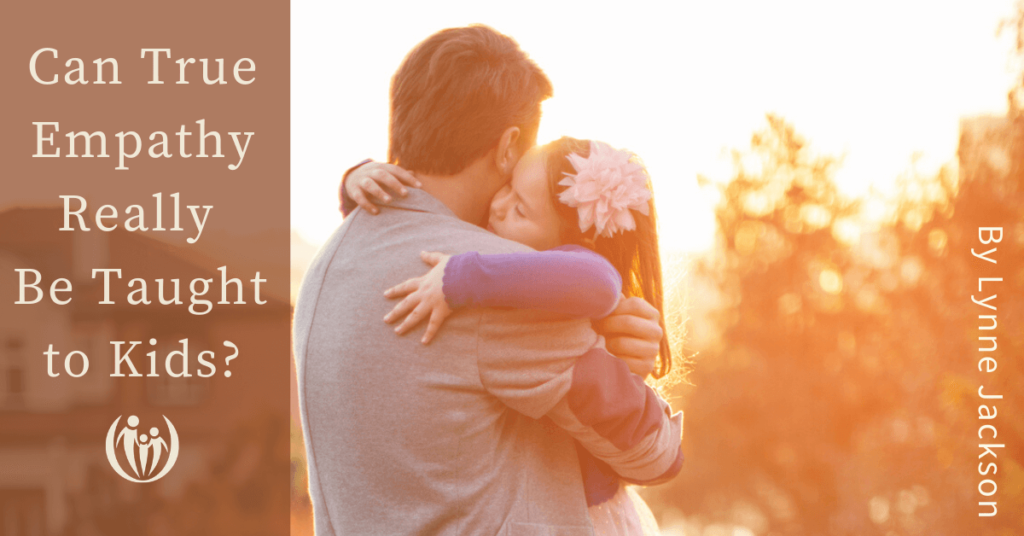
You want your kids to think about others’ feelings. That’s empathy. But can you teach empathy to kids or does it just come naturally? It’s not always automatic, is it? We all know the awful feeling when your child hurts another child. Sometimes kids can be pretty selfish and not think about others’ feelings.
So can empathy really be taught? Yes! Emphatically yes, and we’re going to dive into it. It may be a longer journey for some kids than others, but you have the tools to help them get started.
Why empathy matters to your kids
Cultivating empathy for others is one of the greatest gifts you can give your kids. It’s a “must have” if you want to equip them for healthy intimate relationships in life.
From making friends in the sandbox, to dating, to business room negotiations, imagining the feelings of others is a necessary skill.
And what about marriage? According to research by the Gottman Institute, most problems in a relationship are unsolvable. Take a moment to process that. What kind of empathy is required to see your spouse’s perspective and imagine their feelings, even while you will never agree?
That’s what you’re building toward in your children. Of course, you start with the sandbox. “How does the other child feel when you take her toy?”
Every child is capable of learning empathy, but it can be quite difficult for some to learn. Anxiety and stress can make this process even harder. That’s why it’s worth getting intentional about teaching empathy.
Your kids don’t know how to be empathetic
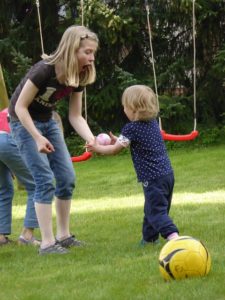
We expect our kids to just “know” how to be empathetic, even when things are stressful. But that’s not always realistic.
In the heat of conflict, you may ask, “Do you know how [your sibling] feels right now?!” And then we actually expect our kids to be able to give an insightful answer.
If our kids could respond insightfully at that point, they might say something like this: “Regretfully I don’t know how my sibling feels. My brain is in a fight-or-flight state. My amygdala has shut down what little there is of my still quite immature frontal lobe. That includes the section where I process empathy. My sister might as well be speaking Wookie.”
Clearly, the starting point for teaching kids empathy is not in the heat of the moment.
Empathy during conflict didn’t come naturally to our kids
We learned this pretty quickly with our three kids.
- Our oldest son, Daniel, was dealing with the stress of an extremely gifted brain and intense emotions. He didn’t easily “step into another person’s shoes” or perspective, especially when upset.
- Bethany generally understood others’ feelings but had difficulty verbalizing her own during conflict resolution.
- Our youngest, Noah, was a happy-go-lucky guy who simply didn’t think about feelings a lot.
We had our work cut out for us.
Can empathy be taught?
Yes. We can report that intentional, hands-on instruction in empathy was successful!
Moreover, the work we did to teach empathy has equipped all our kids for their relationships in life—both with each other and with others. Let’s look at it through the lens of the Connected Families Framework.
To teach empathy, we used the same framework that we used throughout our parenting.
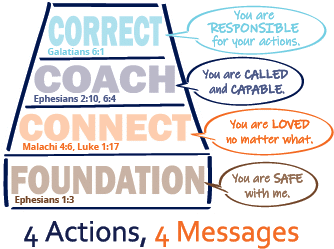
Let’s take a look at how each level of this framework informs our approach to developing empathy in our kids.
Foundation: You are SAFE with me, as I model empathy to teach empathy
Before you engage with your child over something, it’s helpful to ask, “What’s going on with me?”

Some questions to consider:
- How did your family view expressions of emotion when you were growing up?
- How does that affect you now?
- Are you judging your child from your own wounds?
Sometimes we discover we have hurtful judgments about our struggling kids which they inadvertently interpret as, “Anger is bad, and you’re an angry kid. Therefore, you are bad.”
Your negative judgements can become your child’s “inner voice”—the voice that shapes their identity and guides their choices.
I made this mistake. I can remember thinking, “He’s such a narcissist!” We were stuck before we even started.
We needed to use empathy to teach empathy and imagine our son’s experience. We got unstuck when we embraced a much more compassionate belief: “His intensity is too much for him to handle. He needs our help to learn to understand his own emotions and others’.”
You get to choose to adopt a more compassionate belief about your child. Choosing compassion allows you to “drop your baggage” and be a safe, guiding presence.
Connect: You are LOVED no matter what, even when you struggle to show empathy
Your child needs to know they are loved – no matter what. No matter what big, intense feelings they may be having. One of the big ways we experience love is by feeling understood.

Sometimes, it’s tempting to put your focus on stopping your child’s “bad” behavior. When bad behavior is the only way they know how to express their big feelings (and then they get punished for it) this often leads your child to feel misunderstood. They may even move into self-protection mode. That leaves them feeling less able to think about others’ feelings.
Instead, take the time to show you’re trying to understand your child’s feelings and experiences (that is you practicing empathy). Doing so demonstrates love and gives your child a chance to develop self-awareness.
“Empathy develops from self awareness. As five- and six-year-olds become more aware of their own emotions, they begin to recognize them in others, and their emotional vocabulary expands.” – “Ages & Stages: Empathy,” Scholastic
To help kids get to the point where they can understand others, first make sure they feel safe and loved. Here are some ideas for how to do that:
Set the stage with snuggling.

Research tells us that the brain chemical oxytocin (the “cuddle hormone”, released especially during physical affection) increases emotional insight and empathy.
- When snuggling with or sharing an affectionate moment with your child this is a great opportunity to talk about understanding emotions. (NOT during tense moments.) Affectionate touch naturally equips them with the brain chemistry they will need for insight and empathy.
- Note: If your child doesn’t like to snuggle, reading a book together is a naturally cuddly moment. Reading is a great time for empathy practice.
Show empathy and give your child the language for their feelings
One of the most effective ways to connect with anyone is to express heartfelt empathy. Empathy is not just a nice way to connect with your child. It is essential for kids to learn to understand themselves before they can understand others.
When you express empathy toward your child, you are giving them the language to first understand themselves. Only then can they apply that knowledge to understanding others.
Try narrating throughout your child’s day by connecting facial expressions and body language to emotions. Here is a helpful scenario:
- “I saw a big smile on your face when Ryan invited you to play. Did that make you really happy?”
- “But your voice got loud when he took the toy. Did you feel angry because you really wanted to play with it?”
- Adding empathy of your own builds a bridge to your child’s heart: “I would get mad, too, if someone grabbed something I liked out of my hand.”
Doing this throughout your day sets the stage for your child to expand on what you said, as he feels safe and understood. You might even use a feelings chart as you review the day with your child.
Jesus empathizes with us
Let’s be clear. Empathizing with your struggling child isn’t a trick to manipulate them into becoming the compassionate child of your dreams. Empathy is how Jesus relates to us.
“For we do not have a high priest who is unable to empathize with our weaknesses, but we have one who has been tempted in every way, just as we are–yet he did not sin.” Hebrews 4:15
It’s because He empathizes with us that He can help us. Hebrews 2:18 adds: “For because he himself has suffered when tempted, he is able to help those who are being tempted.”
Jesus’ example of empathy is a powerful reminder. It is a holy work to express empathy for your child, enabling you to help them.
Putting “Safe” and “Loved” together
Ask yourself:
- What hurtful judgments might I have about my child who struggles the most to understand other people’s point of view?
- What true belief would help me approach my child with empathy and a desire to come alongside and equip him for his relational challenges?
- What are some key situations in which my child struggles to understand others?
- What is she feeling at that time and how could I express empathy?
When kids feel safe with us, and truly understood, they usually will open their hearts. This allows us to walk alongside them in the vulnerable journey of learning about emotions and empathy for others.
As we embark on this journey, the more creative and non-judgmental we are the more they can learn.
Coach: You are CALLED to and CAPABLE of understanding others

Coaching our kids is about, well, being a coach! Good coaches keep their eye on the prize—that is, helping their “players” to grow in skills and wisdom. Here are a few things to keep in mind as you coach your kids to grow their empathy:
1. Have fun as you teach about emotions.
When kids are having fun they are more open to learning! Below, we list many different ways you can have fun with your child as you coach about emotions. Try one or two and see what works for your family!
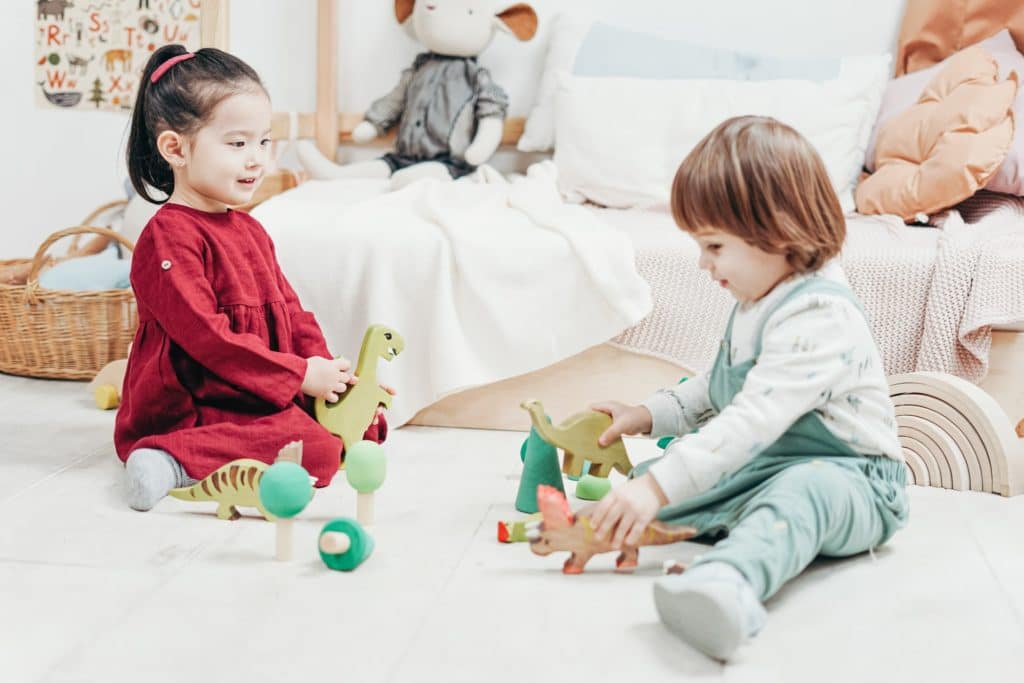
Play feelings games.
Our young, creative, mover-shaker kids were easily bored, and categorized anything that smelled of a condescending lecture with a “blah, blah, blah” label in their brain. So we taught them about emotions by playing a faces game!
We’d express an emotion with our face or body language and invite them to guess what the emotion was. Sometimes they took turns portraying the emotion while we guessed. We laughed a lot and learned together.
Tell stories from your childhood.
One mom entertained her kids and taught them about emotions by sharing about her own silly conflicts with her sister growing up. Think of emotions and experiences from your childhood that you could share. Use these stories to help your kids think and learn about emotions.
Discuss the feelings of characters.
Reading books aloud with younger children is another great opportunity. Stop in the middle of a story and ask, “I wonder how the little tiger feels right now…” or “Look at this picture! How does it look like the man feels? Can you make a face like that too?”
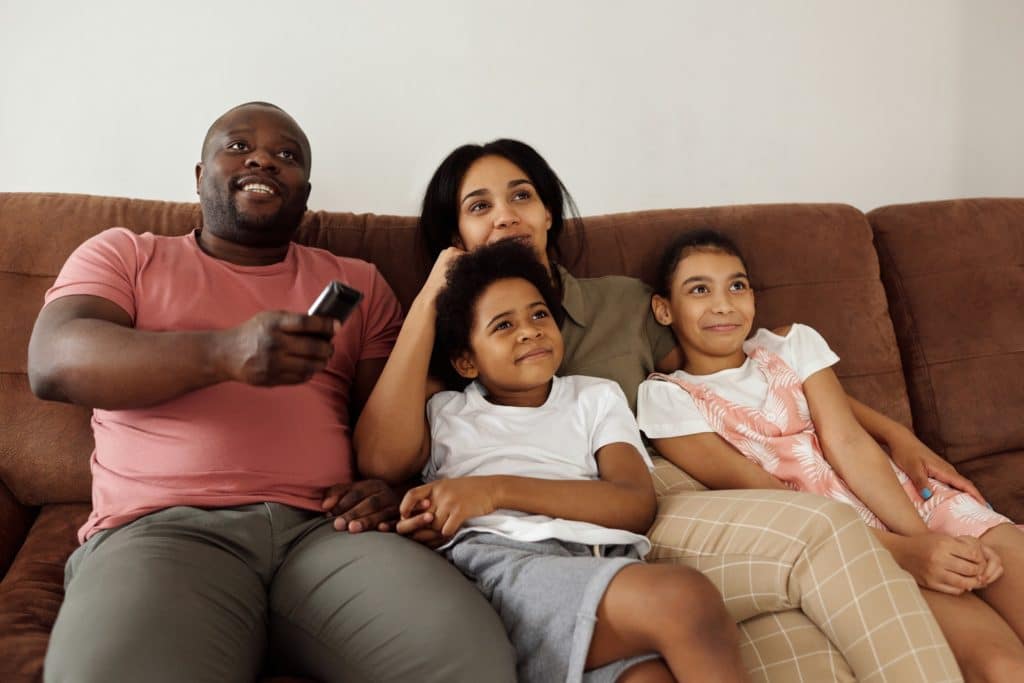
With older children, you can do the same thing with movies, TV shows, or novels. If you’re watching Frozen or reading Horton Hears a Who for the umpteenth time, take advantage of it. When you pause the movie for a bathroom break, stop and ask questions about the feelings of characters in the movie.
You might also ask, “What would you do if you were her?”
Or try empathizing with a villain, “What lie does he believe about himself?”
These sorts of questions force your children to imagine the feelings and experiences inside the heart and mind of another person. They also help your child develop the language to discuss emotions.
A note on books and empathy
Fiction literature is one of the best ways to build empathy in children. Why? Because to get lost in a story, you must imagine the experiences and feelings of another person. That is empathy.
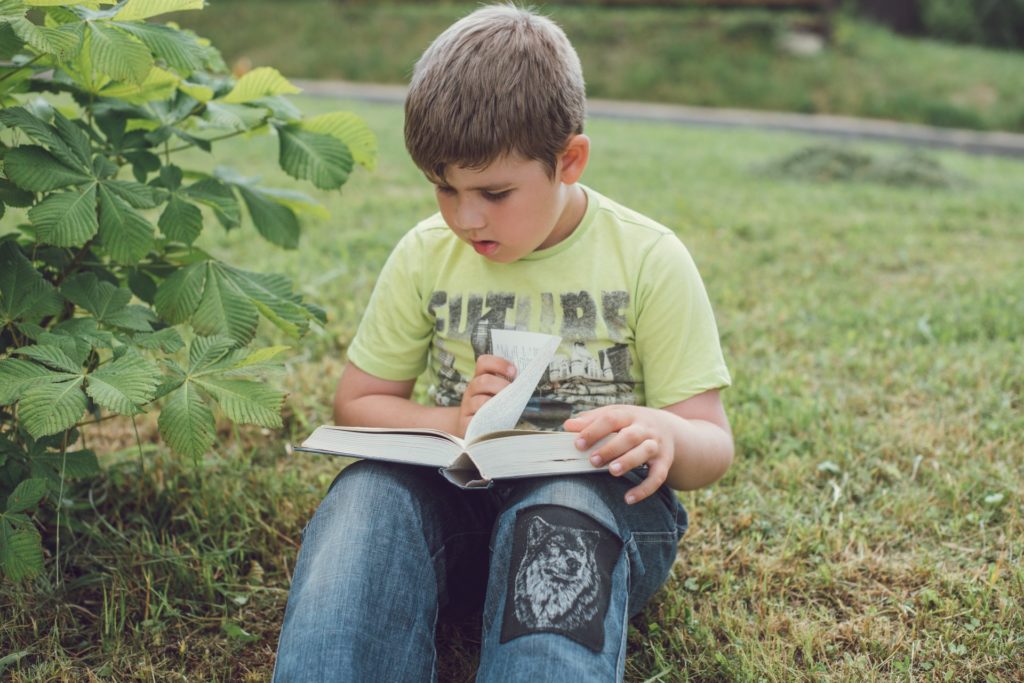
There is abundant research (see here and here) on why fiction is great for empathy-building, both in children and adults. So, if you have an older reader that is particularly resistant to talking about emotions or even reading aloud with you, keep handing them books they love. So long as they keep reading, chances are high they’re getting something from the experience.
And who knows? Maybe they’ll share a bit with you about the books they’re reading, when they’re ready.
If you want to try to be particularly intentional on increasing your empathy-building library, check out the Empathy Library. There are lots of great book suggestions for all ages!
2. Help kids problem-solve their own emotions.
Research tells us that “kids are more likely to show empathic concern for others if they have parents who help them cope with negative emotions in a sympathetic, problem-solving-oriented way.”
But what is sympathetic problem solving?
Sympathetic problem solving doesn’t judge the child or the feelings. Instead, it ushers them into asking themselves, “What can I do?”
If your child goes on a rant about a tough teacher, for example, it’s tempting to judge and condescend (out loud or in your heart). “You’re just overreacting because you don’t like the hard work of homework.” Or maybe even, “Yeah, I don’t like that teacher either!”
Neither judgment is helpful.
A problem-solving conversation involves empathizing with your child first and then pivoting to how they can solve their problem.
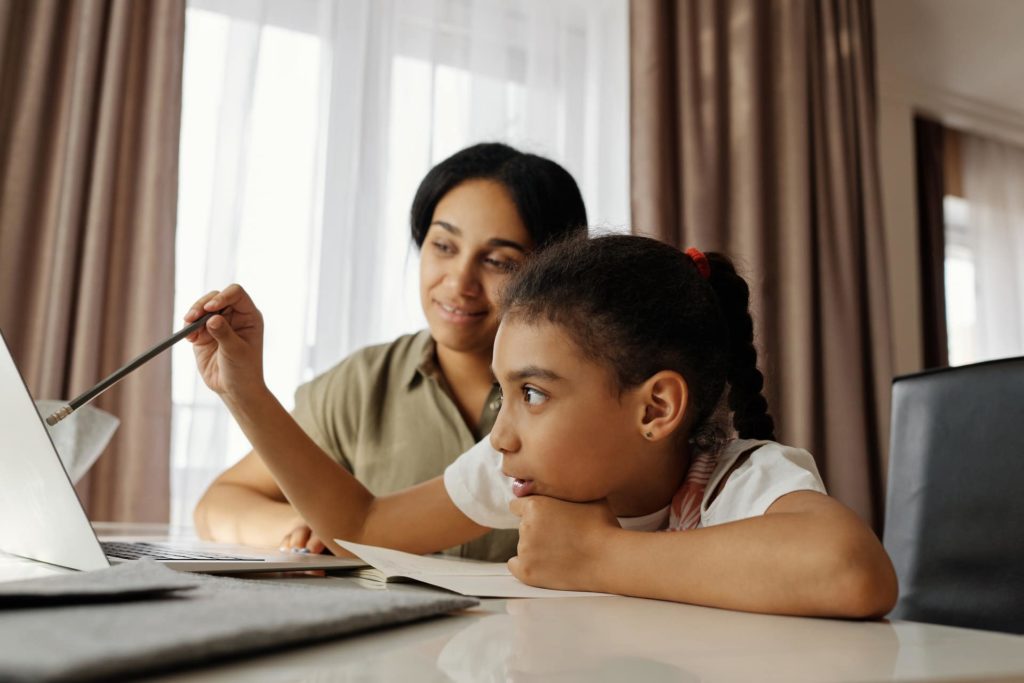
You might say, “It’s clear you’re pretty angry about this. Are there any other feelings you’re having? Are you also feeling overwhelmed or anxious about it?”
Then help your child identify their next-step actions with questions like these:
- What do you think your options are?
- When you’ve gotten through these big assignments before, how did you do that?
- What do you want to do about this?
When you react to kids’ big feelings this way—as the norm rather than the exception —it sets kids up to feel confident about handling their own feelings, and the feelings of others.
It makes sense. If your child is confident they can find a constructive way to respond to their own difficult feelings, they won’t be judgmental or threatened by the difficult feelings of others.
3. Engage your child’s inner social scientist.
For emotions, the world is your classroom. If your kiddo struggles with empathy for a family member, take the learning outside the home.
It’s hard to try to teach empathy in the face of a loud, emotional sibling. Instead, look at a person in a setting other than your home (grocery store, playground, etc.). This provides a perfect social science opportunity.

As you are out and about, talk about other kids and people struggling in the real world.
- Ask, “What do you think that little guy is feeling? What do you think he wants?”
- Don’t forget to point out caregivers’ emotions too. “And look at his mom’s face – what do you think she’s feeling? What does she want?”
- Engage your child in problem-solving. “What do you think each of them could do to help each other?”
- Older kids can also answer the question, “What do you think that person is believing?”
- In certain situations it may even be appropriate to ask, “Do you think there’s anything we can do to help?”
Research shows that teaching kids to notice the emotions of others increases empathy and decreases bullying.
- Practice with babies! In the Roots of Empathy program, kids learn to make observations about the emotions of a baby. A parent brings a baby into the classroom at different developmental stages, and children observe. Babies are cute and not threatening to kids. Definitely take advantage of the opportunity to practice empathy whenever you meet any friends with babies!
- Even pointing out animal’s emotions can teach empathy! If your child likes dogs or cats, help them recognize the emotions in these animals. Then teach them how to respond compassionately.
4. Celebrate the significance of what kids are learning.
It’s not easy to learn to identify and work through your own feelings, or to understand and care about the feelings of others. When kids are able to do this, they are learning something that some adults never learn! Celebrate that.
As you help your kids feel good about these accomplishments, it will promote more learning.
A great verse for reflection is 1 Peter 3:8 (ERV):
“So all of you should live together in peace. Try to understand each other. Love each other like brothers and sisters. Be kind and humble.”
Use this verse to find things to celebrate! Discuss this verse and ask you kids open-ended, success-based questions:
- If a video camera were in the corner of our house, what would it see that would match one of those words? (Have some ideas for each child in mind to get you started before you ask.)
- What would our family be like if we did this verse most of the time?
- What would our world be like if most of the people did also?
Remind them, “How cool that you’re learning this now as kids!”
Correct: You are RESPONSIBLE for showing empathy in conflict

It’s inevitable that your child will experience conflict with others. How we teach kids empathy in conflict is a skill they can carry into adulthood. But how do you help your child learn to feel empathy while in the midst of conflict?
Set realistic expectations. Ask yourself, “How well do I, as an adult, really step into another person’s shoes when I’m upset?”
It’s pretty hard to feel empathy when we’re angry. It is a set-up for failure if you expect this of your child.
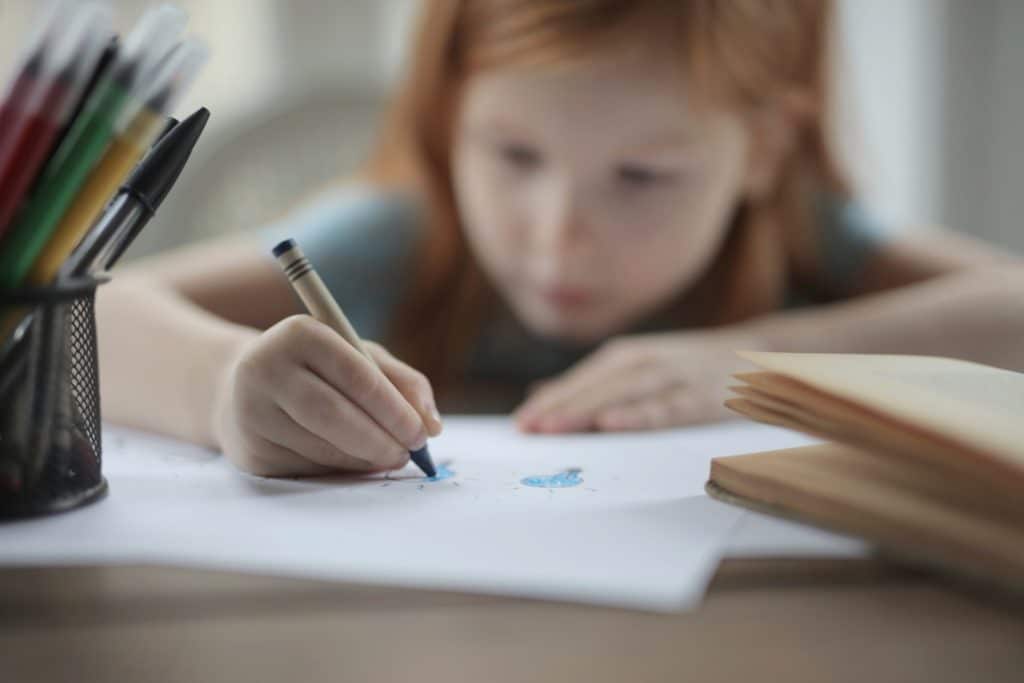
When the heat of family conflict happens, remember…
- First guide everyone to find a way to compose themselves.
- Establish a tone of caring and empathy for your kids.
- Then bridge back to all the proactive teaching you’ve already established:
- “Do you think you feel kind of like [character in a book] now? What about [your sibling]?”
- “Do you remember when I told you about how I would always snitch my sister’s clothes because I was jealous of her? Does anybody feel jealous now?”
- “Do you remember when the boy at the grocery story yesterday looked so sad and angry when he wanted a toy? Does anybody feel like that?”
These specific memories can link kids’ brains to that calmer state when you talked about feelings. They can also facilitate insight and empathy.
To practice empathy, have your children repeat back the feelings of their sibling (or friend) they were in conflict with. This is part of a process, we call the Peace Process.
We cover this in detail in our 5-session Sibling Conflict online course.
Self-reflection questions for next steps in teaching empathy to kids:
- How have I emphasized my children’s own emotional awareness? How can I promote it more?
- How have I judged others’ emotions in front of my children?
- How have I helped my kids empathize with strangers? How can I strategically use the world as a classroom?
- How might I adapt the idea to make sure the learning is engaging for them with their personality and developmental stage?
If you want customized help tailoring this teaching to your specific family situation, check out our coaching options!







